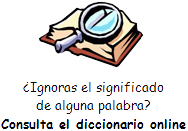Keep Your Identity While Changing
Your Accent
English learners all over the world have the same question: how can I
speak more like a native speaker?
A big industry has grown up around helping non-native English speakers
change their accent. Accent is more than simply how you pronounce
individual words. It also includes the stress and intonation patterns
for whole sentences.
There are many books and software programs, online and in-person courses
that promise to teach a "native accent." But is it really necessary to
sound exactly like a native speaker? Some experts say it is not.
Eusebia V. Mont leads the Accent Modification Program at the University
of Maryland’s Department of Hearing & Speech Sciences. Mont talked about
it to VOA Learning English.
The Accent Modification Program serves students, faculty and the local
community. Students come to the program for one or two school terms.
They meet in a group for 90 minutes a week. Each student meets with one
other student and a clinician for more individual work.
Altogether the program amounts to about 60 hours of learning in class.
Mont says the time needed to improve is different for each student.
“The rate of progress absolutely depends on the type of accent it is,
how long they’ve been speaking English, how often they speak English,
how much exposure they have to the language; listening and speaking; so
it’s a very individualized process.”
Everyone speaks with an accent of one kind or another. People often say
they want to “lose” their accent, or lessen their accent. But it is more
exact to describe such an effort as “adding” or “modifying” an accent.
Mont says the purpose of accent modification is to give students tools
to use when they need others to understand them more clearly.
“Our goal is not to eliminate the accent. I view accent as an extension
of culture; an extension of a person’s individual identity - and I don’t
work to eliminate any part of culture from an individual.”
Students in the program are looking toward the future. They will most
likely work in English-speaking environments when they leave school. The
program teaches them tools for this. For example, they learn how to give
an “elevator pitch” – a short description of an idea – and to discuss
their research. They also practice interviewing and giving presentations
at work.
The program teaches idioms and colloquial expressions as well. This
helps students talk with native English speakers. The idea is to help
them feel part of the English-speaking community in which they study,
work and live.
Mont says that there are a few methods for modifying accent, but most
have the same basis. One method is called the Compton method or
Pronouncing English as a Second Language, or PESL. Arthur J. Compton
developed the method in the 1980s for English learners who know English
vocabulary and grammar fairly well. PESL teaching begins with a test to
find out how the student’s native language affects different areas of
pronunciation. Then, learners use practice materials to record their own
voice and compare their pronunciation attempts to recordings of a native
speaker.
Another method is the Tomatis Method, which uses special headphones and
includes listening to electronically modified music and voices. This
method is also used as a therapy with children who have autism or other
conditions that can cause difficulty in language learning.
The methods used at University of Maryland are based on data from tests
of participants, Mont says. She has found that the best method is the
one that works for the teacher and student. So the team may switch and
use a different method if the first choice does not work.
Learners who want to modify their accent often take a “do-it-yourself”
approach, thinking they know exactly what to work on. But that is not as
easy as it may sound. The participants at University of Maryland’s
Accent Modification Program learn how to listen to and examine their own
speech pattern. They also learn to produce separate sounds and then work
on intonation of sentences. Over time, they build confidence in speaking
understandably in particular situations: class discussions, phone calls,
interviews and discussions of their research.
Accent modification is like any other tool, Mont says.
“When you need it, pull it out of the bag, and when you don’t need it,
it’s fine to put it away… if you are using accent modification for work
advancement, for example, then be comfortable in your home environment
and with friends. Use the accent modification tools that you have
learned when you need them.”
Mont’s final advice to English learners is not to expect to sound
exactly like a native speaker.
“Don’t compare yourself to native English-speaking peers and colleagues.
Unless it is an imitation or mimicking, you’re not likely to sound
exactly like your native English-speaking peers, and that’s okay.”
And remember, even native English speakers do not all speak alike! |
![]() ).
Utiliza el botón derecho del ratón y "guardar enlace" para descargar el
fichero a tu PC, tablet, Smartphone, etc.
).
Utiliza el botón derecho del ratón y "guardar enlace" para descargar el
fichero a tu PC, tablet, Smartphone, etc.![]() Escucha el audio
Escucha el audio



